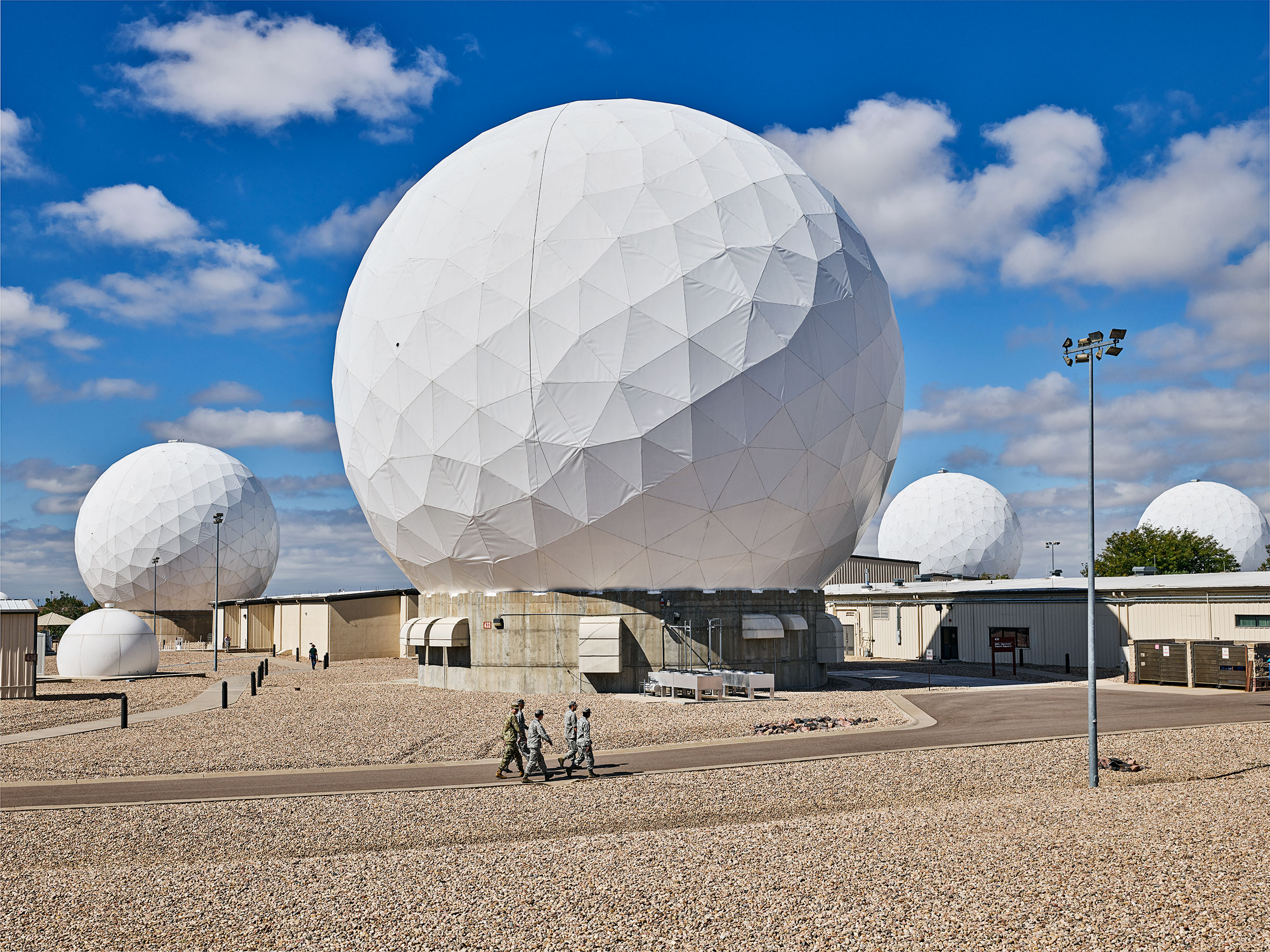American intelligence analysts have been watching a pair of Russian satellites, identified as Cosmos 2542 and 2543, for months. Or rather, they have been watching them since they were one satellite, deployed by a Soyuz rocket that took off from the Plesetsk Cosmodrome on Nov. 26, 2019. It was 11 days after that launch that the first satellite split in two, the second somehow “birthed” from the other, and no one in the U.S. military was happy about the new arrival. By mid-January, both Russian satellites had floated near a multibillion–dollar spacecraft known as KH-11, one of the U.S. military’s most powerful spy tools, part of a reconnaissance constellation code-named Keyhole/CRYSTAL. It wasn’t clear whether the Cosmos satellites were threatening or surveilling the KH-11, which is said to have the resolving power of the Hubble Space Telescope, but it turned out that was only the start of the twins’ surprises.
After the U.S. expressed concern to Moscow through diplomatic channels early this year, the pair pulled away from the KH-11 and whizzed around the Earth at more than 17,000 m.p.h. Then, on July 15, with the U.S. analysts still tracking them, the “birthed” Russian satellite, Cosmos 2543, fired a projectile into outer space, General John “Jay” Raymond, the top general of the newly created U.S. Space Force, told TIME. It was the first time the U.S. military has publicly alleged an instance of a space-based antisatellite weapons test, a troubling new development in the emerging theater of orbital warfare.
To Raymond and supporters of Space Force, which is the first new branch of the U.S. military in 72 years, Moscow’s “nesting doll” satellites, as the military has labeled the Cosmos triplets, represent a threat not just to one really expensive piece of American spy hardware but to the basic functioning of modern America itself. “Russia is developing on-orbit capabilities that seek to exploit our reliance on space-based systems,” Raymond says.
Whatever the Russian crafts’ mission—and Moscow says it is purely peaceful—Raymond’s not wrong that Americans have come to rely on satellites in ways they hardly begin to appreciate. Even as the Cosmos 2543 was launching its projectile, Air Force satellites were performing a host of civilian tasks back home in the U.S. Streetlamps timed to global positioning system (GPS) spacecraft were turning on across the country, and businesses were relying on GPS to time-stamp credit-card purchases. Weather satellites were transmitting information for nightly forecasts. Many of the around 650,000 calls made to 911 every day in the U.S. depend on satellites overhead.
But for all the ways that civilians and the military rely on it, America’s network of roughly 1,000 satellites is virtually unprotected. And just as lightly defended access to deep-water ports or natural resources was a source of war in the past, leaders and strategists worry that America’s vulnerable satellite network is an invitation to conflict in our times. Raymond tells TIME that Russia executed a previous, unreported projectile launch in February 2017. China has started training specialized units with weapons that can blast apart objects in orbit. Both countries have deployed ground-based laser and communications–jamming equipment that can disable satellites.
In short, an arms race for space has begun. This is the story of America’s effort to keep ahead.
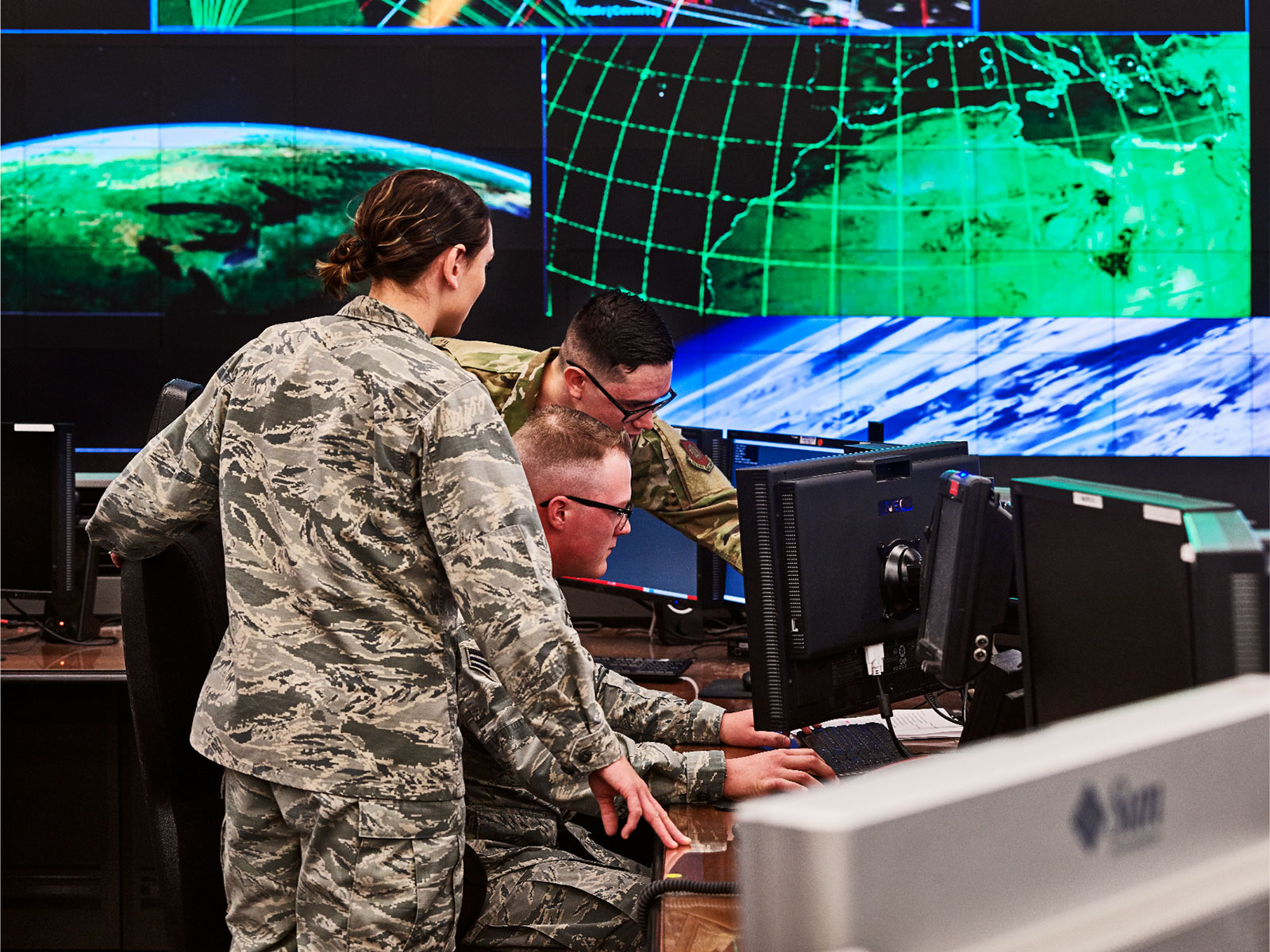
The mission of protecting America’s vulnerable orbital networks falls to U.S. Space Command and Space Force, which since December has the same status as the Army, Navy, Air Force and Marines. The Pentagon has decades of experience building and deploying satellites, the military operates many of the most important ones, and it has arguably the best strategic planning skills of any organization on the planet. It also already employs 20,000 people whose jobs are to oversee and manage America’s space-based GPS, communications, weather and ballistic-missile-warning systems.
But less than eight months after its launch, Space Force is already trying to justify its existence. Some critics say diplomacy and a new international treaty, not increased military muscle, is the best way to secure space. Others point out that the Pentagon famously overstated the danger of Russian and Chinese weapons systems in the Cold War. And few institutions have the history of waste, fraud and abuse that the Pentagon does: watchdogs note that the Space Force budget for 2021 is $15.4 billion, with a projected increase of $2.6 billion over the next five years, most of it driven by classified programs.
Although the cost represents just a fraction of the Pentagon’s $740 billion total budget, convincing Americans that a new service can be trusted to protect our satellites and not just grow a vast new expensive wing on the military–industrial complex will take some doing. It doesn’t help that things have gotten off to a somewhat comedic start: the popular culture has dubbed the new command “Space Farce,” thanks in part to its biggest advocate, President Donald Trump. He’s made it a part of his re-election pitch, and his campaign sells Space Force merch. Trump even personally signed off on the Space Force official seal and made recommendations for styling its uniforms, four U.S. officials tell TIME. When word of Trump’s superficial interest in the complex, high-stakes military undertaking got out, it fueled endless memes and late-night comedy routines. In May, Netflix released a Steve Carell satirical series based on the service’s launch, including uniforms designed to provide camouflage on the moon.

For more than nine months, TIME conducted a series of interviews with Raymond and other Space Command leaders, analysts and operations experts in Washington, D.C., and Colorado, documenting the birth of this new branch of the U.S. military. The picture that emerges is mixed. Space Force comprises dedicated professionals attempting to mitigate real threats. But it has work to do convincing Americans it is undertaking an operation critical to their safety and way of life, and not just an overpriced, militarized vanity project.
The American troops had just minutes to get to safety, and they didn’t even know it yet. At around 1 a.m. local time on Jan. 8, more than a dozen Qiam-1 and Fateh-313 ballistic missiles tore from their launch sites at three bases in western Iran. Within seconds, infrared sensors on U.S. satellites orbiting 22,000 miles overhead registered the missiles’ heat signatures against Earth’s background and beamed the data back to the 460th Operations Group at Buckley Air Force Base in Aurora, Colo. Three immense screens on the Buckley operations floor registered the missiles’ details in real time as row upon row of intelligence analysts, bathed in the bluish glow of computer monitors, triangulated their launch points and trajectories.
With the clock ticking, word went out over another set of U.S. military communications satellites to two Iraqi bases, Al Asad and Erbil, where hundreds of Americans were stationed. The first missiles hit at 1:34 a.m., their 1,400-lb. warheads turning buildings, aircraft and living quarters into smoldering rubble. Concussions from the blasts injured 109 American troops, but most had managed to shelter in underground bunkers and trenches. No one died.
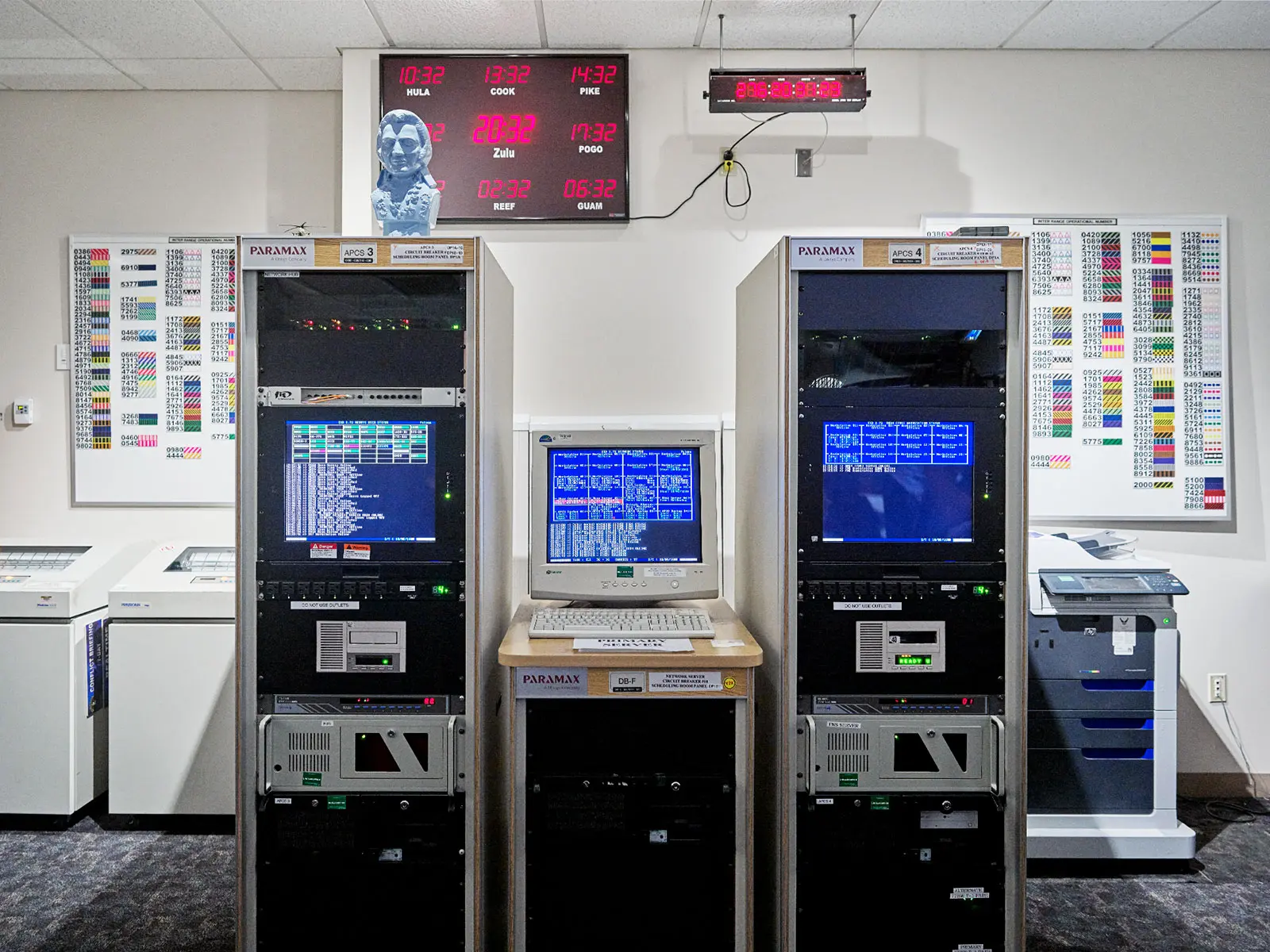
The foiled Iranian attack was a validation of the 50-year U.S. strategy of placing satellites into space to provide tactical advantage in conflict. But in recent decades, the contest has changed: it is about more than missiles, there are more players, and everyone is building constellations of more advanced spacecraft. Since October 2014, a Russian satellite called Luch has “visited” 15 different communications satellites, including a French and Italian military one, according to Bob Hall, a former Lockheed Martin satellite operator who now works as technical director at Analytical Graphics Inc. (AGI), of Exton, Pa. That incident prompted French Defense Minister Florence Parly to announce last year that France will develop “bodyguard” satellites armed with laser weapons. “If our satellites are threatened, we intend to blind those of our adversaries,” she said. The Chinese have also entered the game, deploying in 2016 the Shiyan-17 (SY-17) satellite to execute a “rendezvous” with at least four other satellites—all of them Chinese, AGI found. “They perform this orbital dance where they fly around a satellite very closely,” Hall says.
Both China and Russia reorganized their militaries in 2015, emphasizing the importance of space operations, according to a Defense Intelligence Agency assessment published last year. “They view space as important to modern warfare and view counterspace capabilities as a means to reduce U.S. and allied military effectiveness,” it said, adding that America’s dependence on space is perceived by adversaries as the “Achilles heel” of U.S. military power.
The U.S. government has responded with its own novel space technologies, many of which are top secret. One that is partly declassified is the X-37B space drone, which resembles a miniature space shuttle. The X-37B is in the midst of its sixth mission to test “capabilities necessary to maintain superiority in the space domain,” the military says. The most recent completed mission was a 780-day flight that ended in October.

The threats to space-based systems originate on Earth as well. On April 15, Russia tested an antisatellite missile, and in December the Russian military deployed a new laser system designed to blind spy satellites overhead. GPS users in northern Scandinavia since 2017 have reported signal disruptions whenever Russian military exercises are conducted in the region; the Norwegian government says the Russians are jamming the signals. China is developing jammers to target satellite communications over a range of frequency bands, including military–protected extremely high–frequency communications. And China demonstrated its own antisatellite–missile capability in 2007 when it blasted one of its old weather satellites apart, creating a cloud of more than 3,000 pieces of space debris—a tipping point that arguably started the space arms race unfolding today.
Behind two tiers of razor-wire-topped chain-link fencing inside Schriever Air Force Base, east of Colorado Springs, sits Building 400, one of the most restricted facilities in Space Command. On each floor, space-operations squadrons work in temperature–controlled rooms behind vaultlike doors to ensure that 190 Defense Department satellites, which they call birds, operate without a hitch. These days, when something goes wrong, the operators no longer assume they’re dealing with a technical glitch. “A problem you encounter may be because an adversary created it for you,” says Lieut. Colonel Michael Schriever, director of GPS operations, whose grandfather lent his name to the base. “Space is no longer a benign environment.”
This new mentality, which is referred to as orbital warfare, is a prime driver behind the creation of Space Force. Until recently, space was seen as a peaceful domain: satellites like GPS were thought to be too far away and too costly to target. Not anymore. The Navy has restarted astronomical–navigation training for its officers after concluding their recent reliance on GPS left them vulnerable to space-based attacks. The Army has granted contracts for miniaturized inertial navigation systems that can be strapped to soldiers’ boots to keep track of them if satellites go down. “Our space systems are vulnerable,” says Todd Harrison, director of the Aerospace Security Project at the Center for Strategic and International Studies. “That’s why it’s time for a separate uniformed service.”
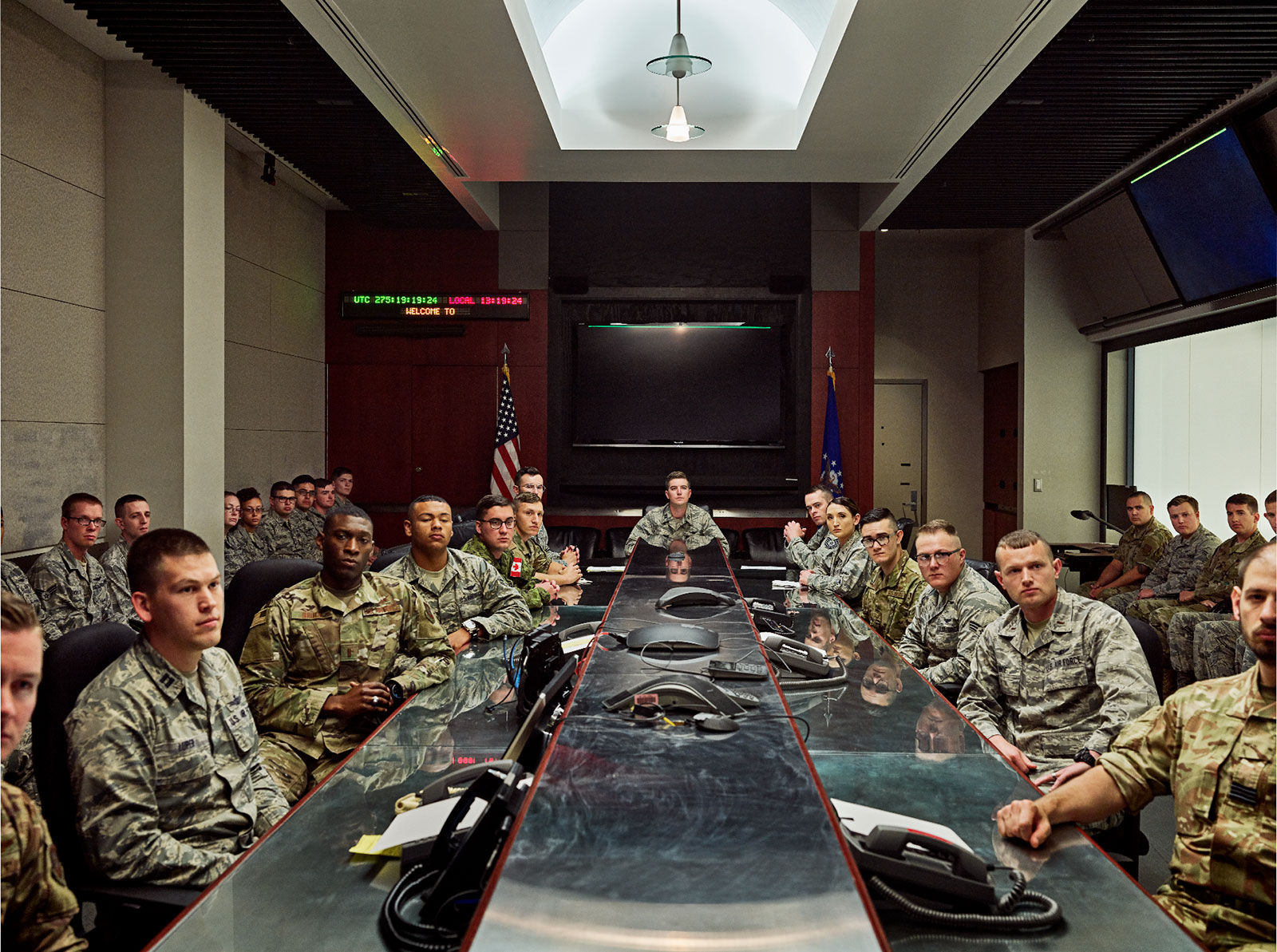
Another reason for Space Force’s creation is that national satellites are currently controlled by multiple services and agencies, which can lead to excessive secrecy and the lack of information sharing known in the intelligence world as hypercompartmentalization. During the Obama Administration, it once took officials four months to assemble a briefing on U.S. space capabilities for then Vice President Joe Biden because information was scattered among so many top-secret classifications and few officials had access to all of them, recalls Robert Cardillo, former director of the U.S. National Geospatial-Intelligence Agency.
But reorganization presents its own challenges. Inside a lower ground-floor office at the Pentagon, behind an unmarked, key-card–accessed door off Corridor 8, is where military planners mapped the future of the military’s newest branch. Step in and look to the right, where the blueprints for the organization are tacked to the wall. At the top of the military hierarchy is General Raymond, currently one of only 88 official Space Force members. Below him is Chief Master Sergeant Roger Towberman, the first senior enlisted adviser, and then cascading tiers and rows of mostly empty rectangles signifying commanders, deputies and other positions.
Some of the work of standing up Space Force is superficial, like what to call its members. If you’re in the Army, you’re a soldier. The Navy? Sailor. Marine Corps? Marine. Air Force? Airman. But the Space Force? Are you … a spaceman? (The Pentagon sent out surveys to service members for their input.) But other aspects are more complicated. The backbone of what will be the Space Force is about 16,000 uniformed and civilian Air Force personnel. On July 16, the new service announced it had selected 2,410 airmen out of more than 8,500 active-duty volunteers to transfer beginning Sept. 1. All will need to transfer contracts, pay and benefits to the newly created bureaucracy of space.
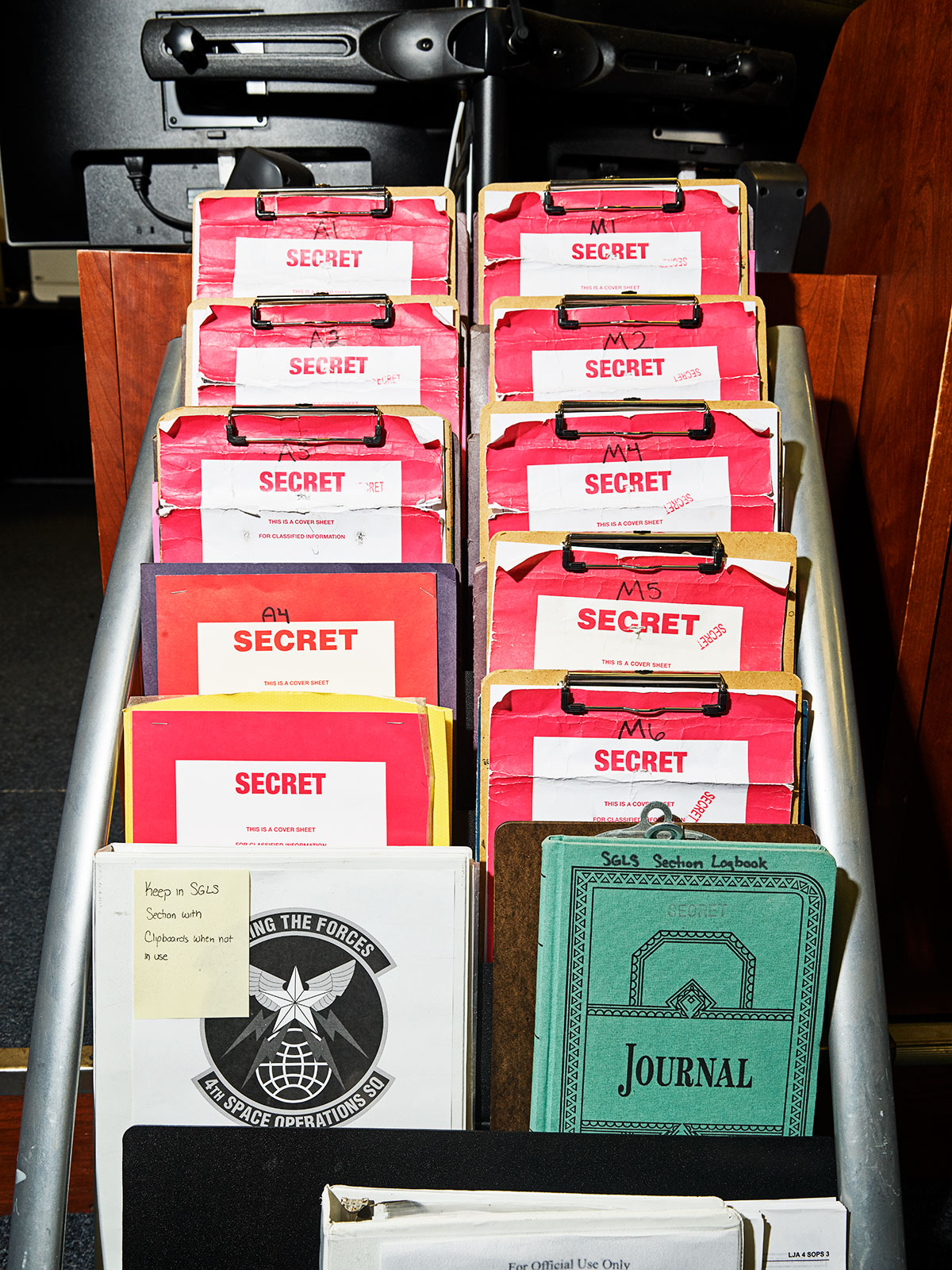
If that sounds potentially expensive to you, you’re not alone. In a rare act of budget prudence, the Hill restricted Space Force from adding any new military positions—they must instead be transferred from other services. Nonetheless, the Congressional Budget Office estimated it would cost up to $3 billion in one-time expenses over the next five years to set up the force, plus an additional $1 billion or so to pay for new management and administrative positions. Government watchdogs have little doubt that a whole new bureaucracy will result in increased federal military funding. “The initial costs of setting up the Space Force are likely a small down payment on an undertaking that could cost tens of billions of dollars in the years to come,” says William Hartung of the Center for International Policy.
The prospect of Space Force has stimulated the enthusiasm of the aerospace industry, which relies on big-ticket defense contracts, and high-tech research institutions and think tanks, which depend on government funding to lend expertise. That in turn creates opportunities for traditional forms of Pentagon waste, fraud and abuse. The U.S. Government Accountability Office (GAO), Congress’s watchdog, has warned the creation of Space Force risks exacerbating fragmentation and ineffective management and complicating oversight when it comes to buying new satellite systems. That’s a big concern considering space projects are routinely billions of dollars over budget and years behind schedule, the GAO said. Deborah Lee James, Air Force Secretary under President Obama, concluded when she was at the Pentagon that Space Force made little sense. “Inherent in all reorganization is bureaucratic thrashing,” she says. “To me, this is just an extra thing out there that’s going to take away time and attention and money.” Convincing Americans otherwise is proving difficult.
It was an abnormally balmy day in Washington, D.C., on Jan. 15 when General Raymond arrived at the White House for a briefing with President Trump. The visit, which was described to TIME by four U.S. officials, was more than just business for Trump. Over the past two years, Space Force has become tied up with his political prospects. Mentions of Space Force are a routine applause line at political rallies. Supporters purchase Space Force hats, T-shirts and bumper stickers on his official 2020 campaign site, putting it on par with “Build the wall” and “Make America great again” as a rallying cry for his re-election push. Trump, a businessman who regularly flipped through fabric swatches for his multibillion–dollar construction projects, has made clear to Pentagon leadership that he wants to have a personal hand in decisions on everything from uniforms and logos to the service anthem and names of ranks.
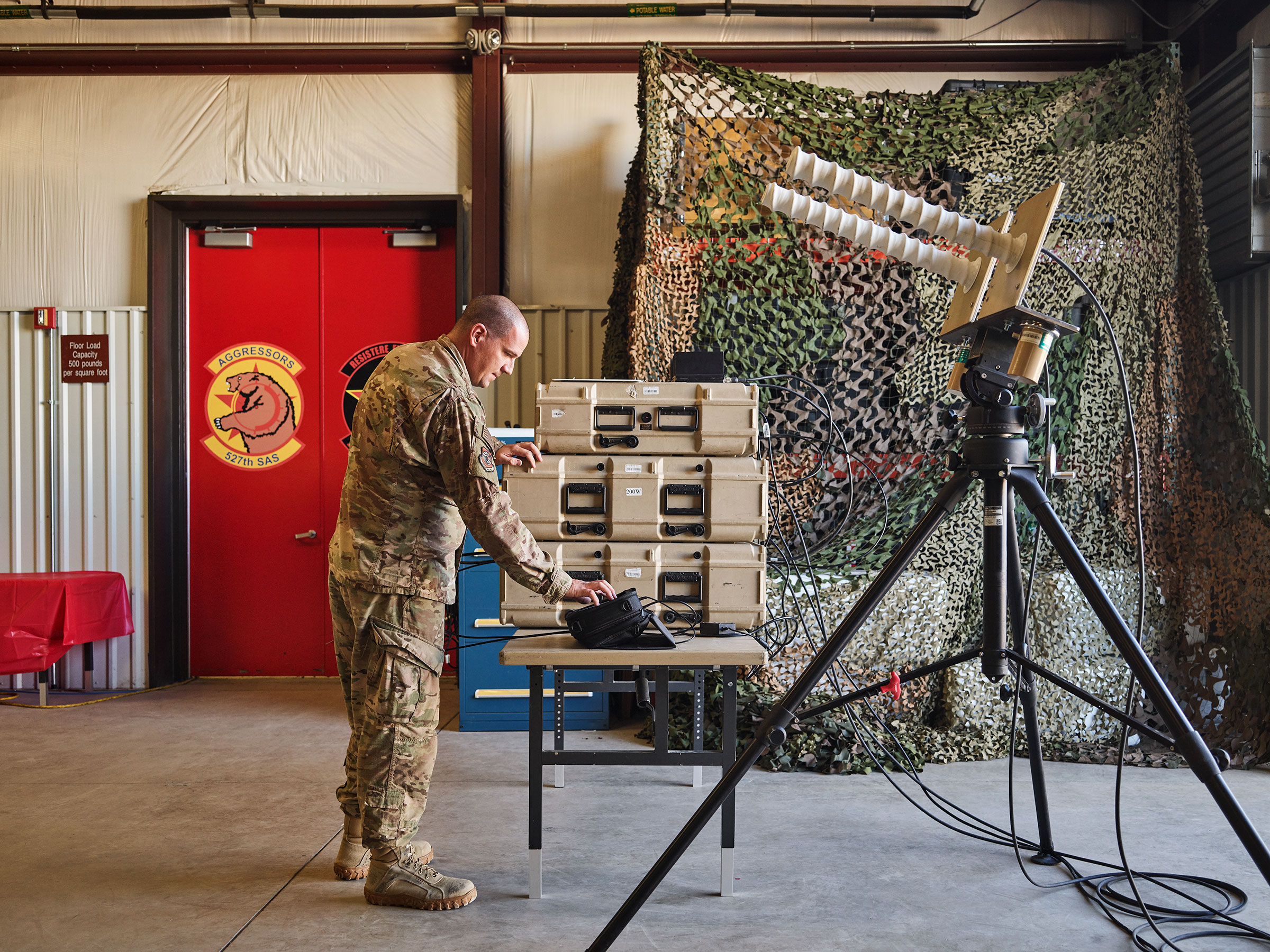
So, after being ushered into the Oval Office to sit in a semicircle before the Resolute desk, Raymond and other military leaders, including Defense Secretary Mark Esper, presented Trump with the first of what will be a long list of Space Force decisions: What will be the official seal? Four options, products of monthslong deliberations with advertising agencies and Air Force brass, were printed on foam-core posters and arrayed in front of the President. Trump studied each one before settling on one featuring a silver delta symbol circled by a white orbiting spacecraft surmounting a blue globe. To make it official, Trump pulled out a black Sharpie marker, drew an arrow pointed at the seal and scratched out his signature above it. Before the brass left, the President offered a suggestion: perhaps First Lady and former model Melania Trump should help design Space Force uniforms because of her impeccable fashion sense. The incident later served as the comedic tension at the heart of an episode of the eponymous and fictional Netflix series.
Nine days after that meeting, without warning the Pentagon, Trump took to Twitter to post his decision on the new seal, which he erroneously called a “logo.” It drew instant ridicule. Thousands of users pointed to the seal’s noticeable resemblance to Star Trek’s emblem for the fictional space organization Starfleet. Executives from Paramount Pictures later requested a conference call with the Pentagon to ensure their trademarks weren’t infringed, U.S. officials tell TIME. The U.S. military fired off a prewritten statement to tamp down the criticism, which said the main elements of the seal date back to the 1940s and serve to honor the Air Force’s “proud history and long-standing record of providing the best space capabilities in the world.”
The dustup underscores what may be the main challenge confronted by the Pentagon in the early phases of rolling out the new service: Space Force is still seen as a joke by many Americans. Raymond insists that any news is good news and that the mockery will only raise the profile of the mission. “We have a pop–culture intrigue that we need to capitalize on,” he says. Privately, military officials say, he’s even considered making a guest appearance on the Netflix series. “We’ve got some education to do for the average Americans on just how reliant their lives are on space capabilities,” Raymond says.

Behind the humor are serious concerns about war: the mix of vulnerable satellites and Russian and Chinese competition has even doves worried about where things are headed. The Trump Administration, and the majority of House Democrats who voted in December to create and fund Space Force, agree that to limit the danger of a 21st century war in space, the U.S. must deter nations by expanding American military capabilities.
Russia and China say it is the U.S. that is militarizing space. Both have lashed out about the creation of the Space Force as a violation of the international consensus on the peaceful use of outer space, which they say undermines global strategic balance and stability. On the same day of the July 15 Russian space-launched weapons test, Dmitry Rogozin, head of Russia’s space program, delivered a speech to counterparts in Brazil, India, China and South Africa via videoconference in which he called for “space free of weapons of any type, to keep it fit for long-term and sustainable use as it is today.”
Regardless of the seemingly contradictory Russian positions, some U.S. critics and arms–control analysts say the creation of Space Force makes conflict more likely. A new orbital arms race has turned space into a “war-fighting domain,” like air, land and sea, and will funnel billions of dollars to newfangled technology that increases the possibility of war, both up there and down here. A separate branch of the armed forces for space, these critics fear, risks militarizing U.S. space policy and promoting weapons in space. On June 17, the Pentagon unveiled a Defense Space Strategy that made clear the U.S. will counter Russian and Chinese space weapons, coordinate with allies and prepare for war in space.
Those looking for a less martial alternative point to Cold War treaties that reduced the chances of conflict with the USSR. Despite the advancements of space weapons, there are no enforceable rules for military action in space. The 1967 Outer Space Treaty forbids countries from deploying “nuclear weapons or any other kinds of weapons of mass destruction” in space. But that language is broad, arms–control analysts say, and could not foresee the rapid pace of technology now in development. “In the absence of any international agreements about protecting satellites and the outer-space environment, more countries are developing weapons that can destroy satellites in orbit,” says Laura Grego of the Union of Concerned Scientists.
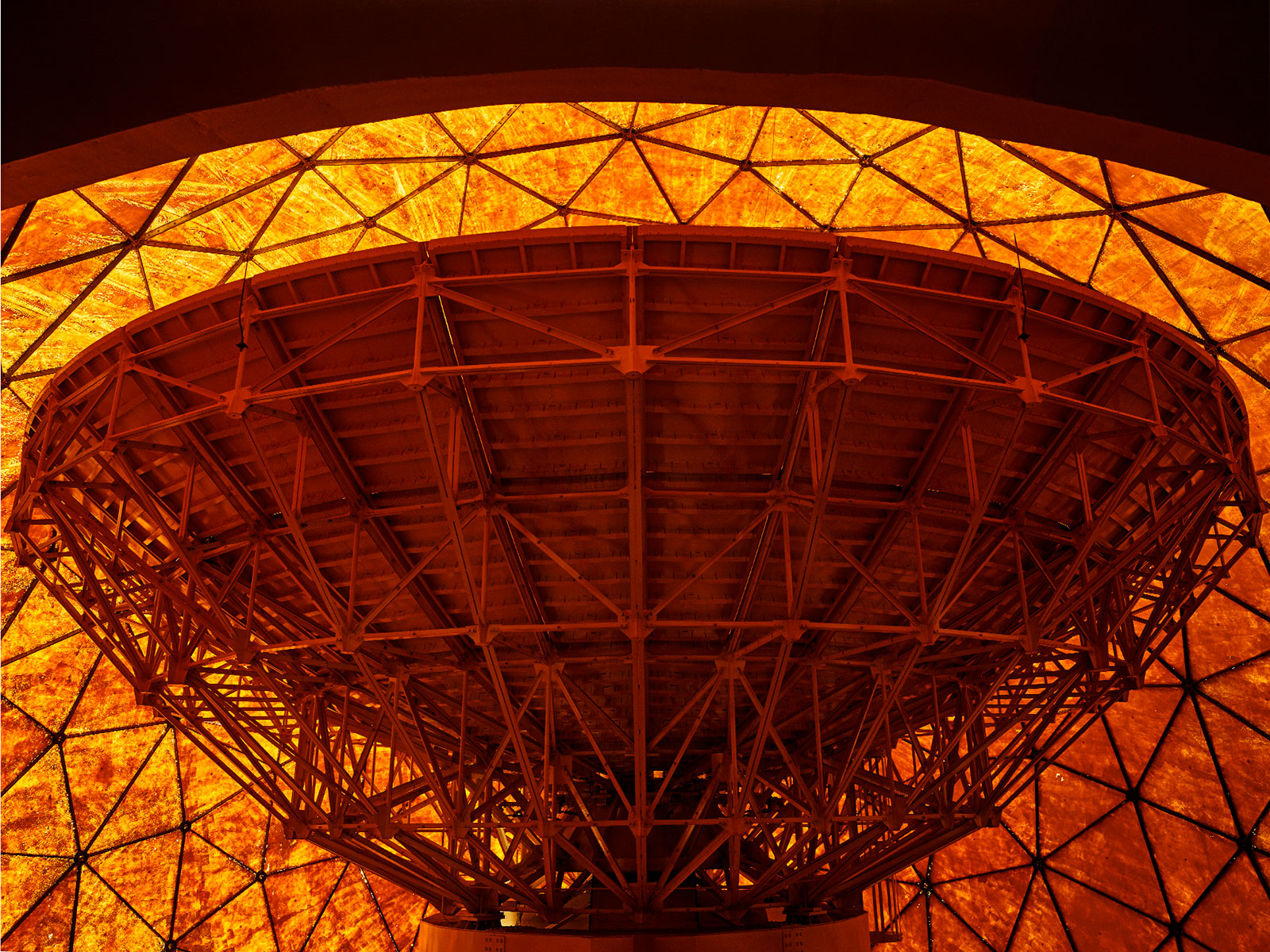
A treaty for space brings its own challenges. There are ongoing U.S. military and diplomatic discussions about bringing more allies and partners together to ensure space remains safe, but the White House says it isn’t interested in forging new treaties on space-based weaponry. A U.S. State Department official tells TIME that defining a “space weapon” is difficult and verifying that it isn’t a weapon is an even harder problem. “It’s not like you can go up there and inspect it—a satellite is going to look like a satellite,” the official says. “For all of those reasons, we don’t support arms control” in space.
Treaty advocates say the problem will get harder as time passes. The U.N. recognizes 90 space-faring nations. In March 2019, India tested its antisatellite system, obliterating its own spacecraft. It proudly proclaimed that it had joined the “elite club of space powers.” Other nations such as Iran, North Korea and Pakistan have demonstrated space-weapon capabilities or a desire to expand them.
One way or another, hawks and doves agree that something must be done to shift the new space arms race off its current trajectory. It is a historical truth, after all, that wherever humans have ventured, violence has followed.
—With reporting by Julia Zorthian
More Must-Reads from TIME
- Cybersecurity Experts Are Sounding the Alarm on DOGE
- Meet the 2025 Women of the Year
- The Harsh Truth About Disability Inclusion
- Why Do More Young Adults Have Cancer?
- Colman Domingo Leads With Radical Love
- How to Get Better at Doing Things Alone
- Michelle Zauner Stares Down the Darkness
Write to W.J. Hennigan/Colorado Springs at william.hennigan@time.com
